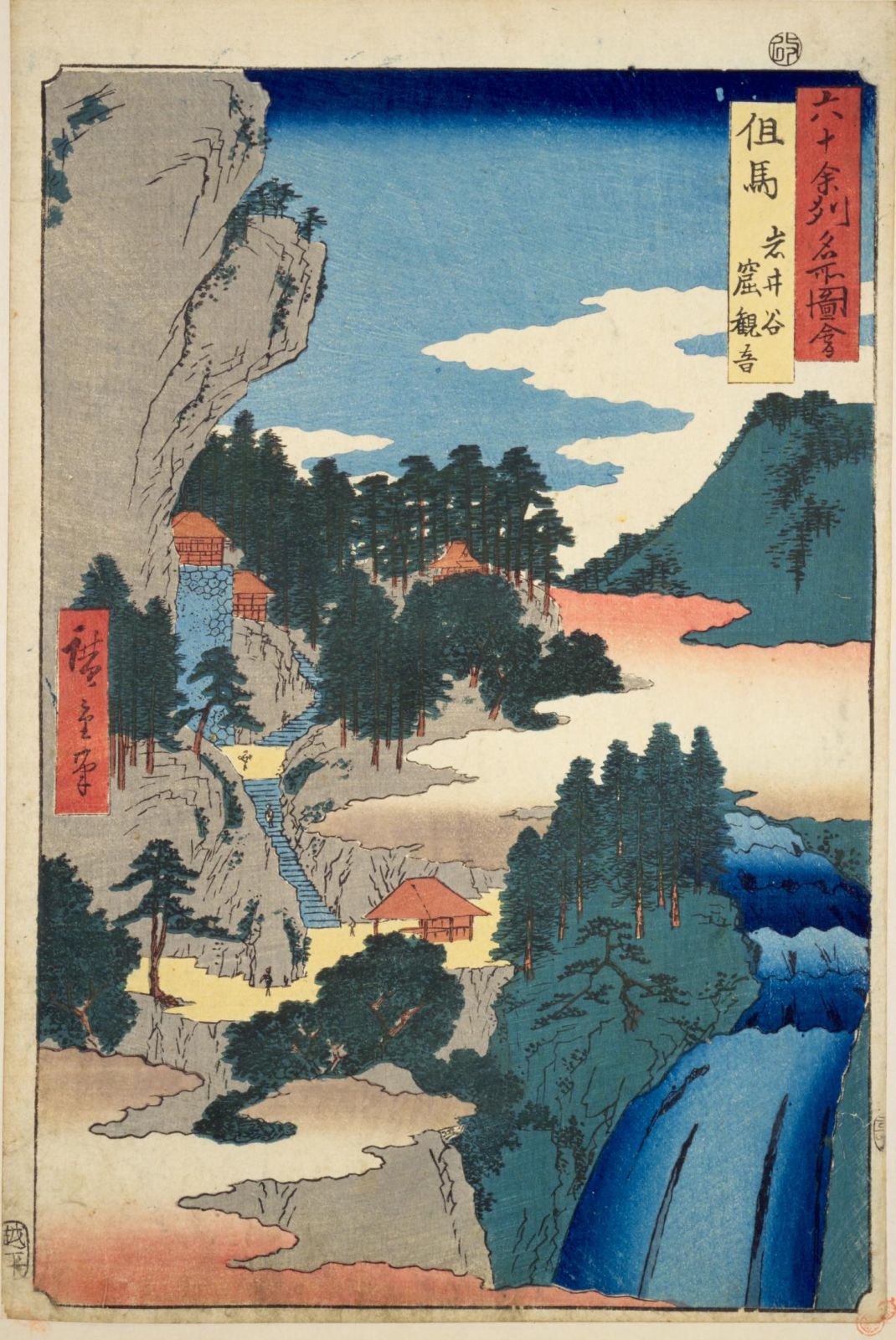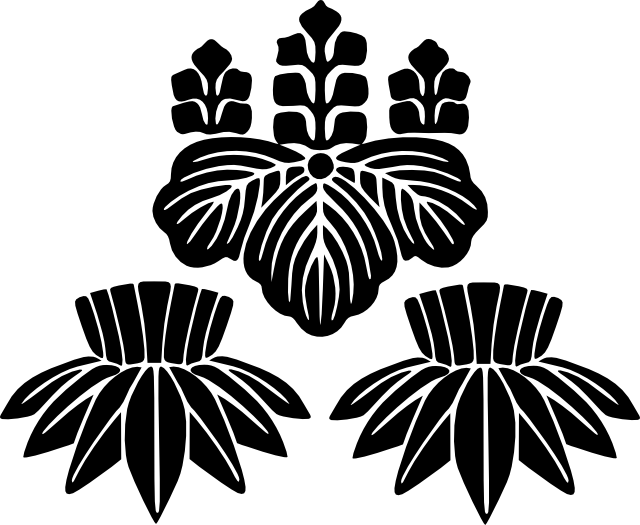|
Tajima Province
was a province of Japan in the area of northern Hyōgo Prefecture. Tajima bordered on Tango and Tanba to the east, Harima to the south, and Inaba to the west. Its abbreviated form name was . In terms of the Gokishichidō system, Tajimao was one of the provinces of the San'indō circuit. Under the ''Engishiki'' classification system, Tajima was ranked as one of the "superior countries" (上国) in terms of importance, and one of the "near countries" (近国) in terms of distance from the capital. The provincial capital was located in what is now the city of Toyooka. The ''ichinomiya'' of the province is the Izushi Shrine also located in Toyooka. The area of the province was 2099.01 square kilometers. History Early history The early history of the Tajima region is uncertain. There appear to have been two power centers. The Tajima ''Kuni no miyatsuko'' ruled in eastern Tajima (present-day Asago District and Yabu District) and are mentioned in the ''Kujiki''. They tenuously ... [...More Info...] [...Related Items...] OR: [Wikipedia] [Google] [Baidu] |
Emperor Kaika
, also known as in the ''Kojiki'', and in the '' Nihon Shoki'' was the ninth legendary emperor of Japan, according to the traditional order of succession. Very little is known about this Emperor due to a lack of material available for further verification and study. Kaika is known as a "legendary emperor" among historians as his actual existence is disputed. Nothing exists in the ''Kojiki'' other than his name and genealogy. Kaika's reign allegedly began in 158 BC. He had one wife and three consorts whom he fathered five children with. After his death in 98 BC, one of his sons supposedly became Emperor Sujin. Legendary narrative In the ''Kojiki'' and '' Nihon Shoki'', only Kaika's name and genealogy were recorded. The Japanese have traditionally accepted this sovereign's historical existence, and an Imperial ''misasagi'' or tomb for Kaika is currently maintained; however, no extant contemporary records have been discovered that confirm a view that this historical figure actually ... [...More Info...] [...Related Items...] OR: [Wikipedia] [Google] [Baidu] |
Yamana Clan
The was a Japanese samurai clan which was one of the most powerful of the Muromachi period (1336-1467); at its peak, members of the family held the position of Constable (''shugo'') over eleven provinces. Originally from Kōzuke Province, and later centered in Inaba Province, the clan claimed descendance from the Seiwa Genji line, and from Minamoto no Yoshishige in particular. The clan took its name from the village of Yamana in present-day Gunma Prefecture. They were valued retainers under Minamoto no Yoritomo, and counted among his ''gokenin''. The Yamana were among the chief clans in fighting for the establishment of the Ashikaga shogunate, and thus remained valued and powerful under the new government. They were Constables of five provinces in 1363, and eleven a short time later. However, members of the Yamana clan rebelled against the shogunate in the Meitoku Rebellion of 1391 and lost most of their land. Yamana Sōzen (1404 – 1473), likely the most famous member of the ... [...More Info...] [...Related Items...] OR: [Wikipedia] [Google] [Baidu] |
Muromachi Period
The is a division of Japanese history running from approximately 1336 to 1573. The period marks the governance of the Muromachi or Ashikaga shogunate (''Muromachi bakufu'' or ''Ashikaga bakufu''), which was officially established in 1338 by the first Muromachi ''shōgun'', Ashikaga Takauji, two years after the brief Kenmu Restoration (1333–1336) of imperial rule was brought to a close. The period ended in 1573 when the 15th and last shogun of this line, Ashikaga Yoshiaki, was driven out of the capital in Kyoto by Oda Nobunaga. From a cultural perspective, the period can be divided into the Kitayama and Higashiyama cultures (later 15th – early 16th centuries). The early years from 1336 to 1392 of the Muromachi period are known as the '' Nanboku-chō'' or Northern and Southern Court period. This period is marked by the continued resistance of the supporters of Emperor Go-Daigo, the emperor behind the Kenmu Restoration. The Sengoku period or Warring States period, which begi ... [...More Info...] [...Related Items...] OR: [Wikipedia] [Google] [Baidu] |
Awaga-jinja
is a Shinto shrine in the Santocho Awaga neighborhood of the city of Asago in Hyōgo Prefecture, Japan. It is one of the two shrines (along with Izushi Jinja) which claim the title of ''ichinomiya'' of former Tajima Province. The main festival of the shrine is held annually on October 17. Enshrined ''kami'' The main ''kami'' enshrined at Awaga Jinja are: * * , the third prince of the 9th Emperor Kaika and the great-grandfather of the 12th Emperor Keiko. * , third son of Ninigi and Konohanasakuya-hime; grandfather of Emperor Jimmu. History The origins of Awaga Jinja are unknown. According to the shrine's legend, it was founded during the reign of the legendary Emperor Suinin. A local noble, Ohiko Hayami offered to the Imperial Court to build a shrine to worship the Amenomisari, as this ''kami'' was an ''arashin'' (rough deity) which needed placating. His great-grandson took the surname "Kambe" and was the ''kuni no miyatsuko'' of Tajima. The shrine first appears in the historic ... [...More Info...] [...Related Items...] OR: [Wikipedia] [Google] [Baidu] |
Shinto Shrine
A is a structure whose main purpose is to house ("enshrine") one or more ''kami'', the deities of the Shinto religion. Overview Structurally, a Shinto shrine typically comprises several buildings. The '' honden''Also called (本殿, meaning: "main hall") is where a shrine's patron ''kami'' is/are enshrined.Iwanami Japanese dictionary The ''honden'' may be absent in cases where a shrine stands on or near a sacred mountain, tree, or other object which can be worshipped directly or in cases where a shrine possesses either an altar-like structure, called a ''himorogi,'' or an object believed to be capable of attracting spirits, called a ''yorishiro,'' which can also serve as direct bonds to a ''kami''. There may be a and other structures as well. Although only one word ("shrine") is used in English, in Japanese, Shinto shrines may carry any one of many different, non-equivalent names like ''gongen'', ''-gū'', ''jinja'', ''jingū'', ''mori'', ''myōjin'', ''-sha'', ''taisha ... [...More Info...] [...Related Items...] OR: [Wikipedia] [Google] [Baidu] |
Monuments Of Japan
is a collective term used by the Japanese government's Law for the Protection of Cultural Properties to denote Cultural Properties of JapanIn this article, capitals indicate an official designation as opposed to a simple definition, e.g "Cultural Properties" as opposed to "cultural properties". as historic locations such as shell mounds, ancient tombs, sites of palaces, sites of forts or castles, monumental dwelling houses and other sites of high historical or scientific value; gardens, bridges, gorges, mountains, and other places of great scenic beauty; and natural features such as animals, plants, and geological or mineral formations of high scientific value. Designated monuments of Japan The government ''designates'' (as opposed to '' registers'') "significant" items of this kind as Cultural Properties (文化財 ''bunkazai'') and classifies them in one of three categories: * * , * . Items of particularly high significance may receive a higher classification as: * * * ... [...More Info...] [...Related Items...] OR: [Wikipedia] [Google] [Baidu] |
Tajima Kokubun-ji
is a Jōdo-shū Buddhist temple located in the Hidaka-chō neighborhood of the city of Toyooka, Hyōgo, Japan. Its main image is a statue of Yakushi Nyorai. It is the modern successor of one of the provincial temples established by Emperor Shōmu during the Nara period (710–794) for the purpose of promoting Buddhism as the national religion of Japan and standardising control of Yamato rule over the provinces. The foundation stones for the original temple were designated as a National Historic Site in 1990, with the area under protection extended in 2000, 2004, 2011, 2013 and 2015. History The ''Shoku Nihongi'' records that in 741, as the country recovered from a major smallpox epidemic, Emperor Shōmu ordered that a monastery and nunnery be established in every province, the . The Tajima Kokubun-ji is located in the Kokufu Plain formed by the Maruyama River in the southern part of Toyooka City. The current precincts overlap with the ruins of ancient provincial temple, and t ... [...More Info...] [...Related Items...] OR: [Wikipedia] [Google] [Baidu] |
Nihon Koki
Japan ( ja, 日本, or , and formally , ''Nihonkoku'') is an island country in East Asia. It is situated in the northwest Pacific Ocean, and is bordered on the west by the Sea of Japan, while extending from the Sea of Okhotsk in the north toward the East China Sea, Philippine Sea, and Taiwan in the south. Japan is a part of the Ring of Fire, and spans an archipelago of 6852 islands covering ; the five main islands are Hokkaido, Honshu (the "mainland"), Shikoku, Kyushu, and Okinawa. Tokyo is the nation's capital and largest city, followed by Yokohama, Osaka, Nagoya, Sapporo, Fukuoka, Kobe, and Kyoto. Japan is the eleventh most populous country in the world, as well as one of the most densely populated and urbanized. About three-fourths of the country's terrain is mountainous, concentrating its population of 123.2 million on narrow coastal plains. Japan is divided into 47 administrative prefectures and eight traditional regions. The Greater Tokyo Area is the most pop ... [...More Info...] [...Related Items...] OR: [Wikipedia] [Google] [Baidu] |
Kobe Shimbun
is a Japanese-language daily newspaper based in Kobe, Japan Japan ( ja, 日本, or , and formally , ''Nihonkoku'') is an island country in East Asia. It is situated in the northwest Pacific Ocean, and is bordered on the west by the Sea of Japan, while extending from the Sea of Okhotsk in the north ..., and the company publishing that newspapers is also called . External links ''Kobe Shimbun'' Webnews Daily newspapers published in Japan Mass media in Kobe Companies based in Kobe {{japan-corp-stub ... [...More Info...] [...Related Items...] OR: [Wikipedia] [Google] [Baidu] |
Kokufu
are the capitals of the historical Provinces of Japan. History As part of the Taika Reform (645) which aimed at a centralization of the administration following the Chinese model (''ritsuryō''), the kokufu and with it the office of the kokushi, replacing the older ''Kuni no miyatsuko'', developed in the 660s. The ''Wamyō Ruijushō'' (Collection of Japanese Names) from 935 contains the earliest listing of the capitals of the provinces and their location. The location of the original capitals of the 8th and 9th century are not passed down. When during the Muromachi Period, starting in the 14th century, the functions of the kokushi were increasingly transferred to military governors (''shugo''), the provincial governments (''kokuga'') lost their importance. Organisation In the center of the kokufu lay the provincial government (''kokuga'') with its offices (administration, farming, finance, police and military) and the official building of the kokushi, known as . In the peri ... [...More Info...] [...Related Items...] OR: [Wikipedia] [Google] [Baidu] |
Wamyō Ruijushō
The is a 938 CE Japanese dictionary of Chinese characters. The Heian period scholar Minamoto no Shitagō (源順, 911–983 CE) began compilation in 934, at the request of Emperor Daigo's daughter. This ''Wamyō ruijushō'' title is abbreviated as ''Wamyōshō'', and has graphic variants of 和名類聚抄 with ''wa'' 和 "harmony; Japan" for '' wa'' 倭 "dwarf; Japan" and 倭名類聚鈔 with ''shō'' 鈔 "copy; summarize" for ''shō'' 抄 "copy; annotate". The ''Wamyō ruijushō'' is the oldest extant Japanese dictionary organized into semantic headings, analogous to a Western language thesaurus. This ancient lexicographical collation system was developed in Chinese dictionaries like the ''Erya'', ''Xiao Erya'', and ''Shiming''. The ''Wamyōshō'' categorizes ''kanji'' vocabulary, primarily nouns, into main headings (''bu'' 部) divided into subheadings (''rui'' 類). For instance, the ''tenchi'' (天地 "heaven and earth") heading includes eight semantic divisions like ... [...More Info...] [...Related Items...] OR: [Wikipedia] [Google] [Baidu] |





